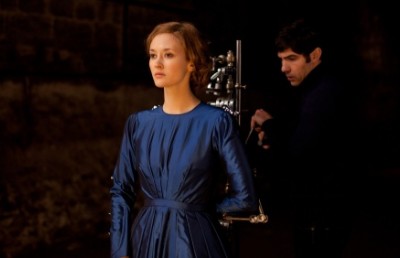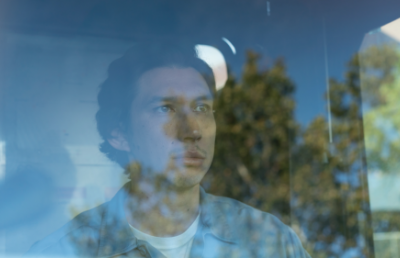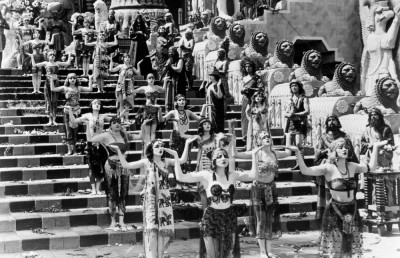TIFF 2016: The Backup Plan
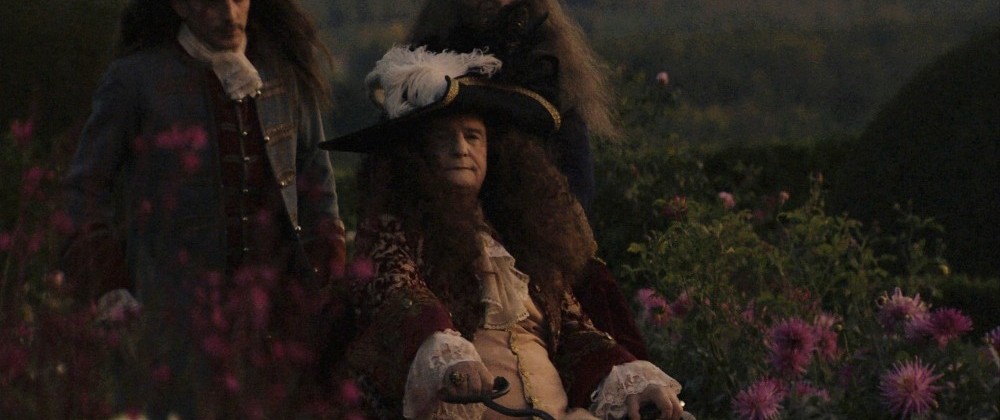
Wavelengths
I had been hoping to see most or all of the Wavelengths programs of avant-garde shorts at this year’s Toronto International Film Festival (TIFF), but as there was only one screening of each, and those being “combined” screenings at the TIFF Lightbox (i.e., public screenings with some seats set aside for press and industry), getting tickets was surprisingly difficult. So after spending over an hour in a rush line for the first program with nothing to show for it, along with a lot of pissed off guys with beards and ponytails, I decided to concentrate on the narrative films at the festival, which were easier to get into—especially those playing at the Art Gallery of Ontario (AGO), which is a ways off from the festival’s main venues and is where the Wavelengths programs played last year.
One of the fews shows I did have to line up for was a combined screening of Albert Serra’s La Mort de Louis XIV (also at the Lightbox), 1 which I was particularly determined to get into as I haven’t had a chance to see any of Serra’s previous films and didn’t know when I’d get another opportunity to see this one. Almost unrelentingly sombre and under-lit to the point where it’s difficult to tell the night scenes from the day ones, the movie portrays the aged Sun King (Jean-Pierre Léaud, in a performance that consists mainly of wheezing and moaning) dying in agony of gangrene while his overly circumspect doctors do everything in their power to cure him except cutting off his leg. (It’s not always good to be the king.) At one point, they even bring in a charlatan who promises to cure Louis with a serum made from bull semen and blood, and when his condition predictably fails to improve, the king’s doctors have the charlatan arrested for harming his health. As this suggests, the film has a certain quiet humour that makes it bearable, and despite being set entirely in a single room, Serra’s shallow group stagings in ‘Scope never become repetitive.
By way of contrast, Matías Piñeiro’s Hermia & Helena is perfectly delightful, as well as being virtually the only movie I saw at this year’s festival that earned every minute of its length. The story centres on an Argentine theatre director (Agustina Muñoz) and her overlapping romantic entanglements with three different men, but rather than developing in a linear fashion, the plot consists of a series of largely self-contained episodes, each focussing on the heroine’s relationship with a different person. (The film is divided into several chapters, the title of each beginning with “Camila &…”) The talky script, Manhattan locations, and Scott Joplin music give the movie a Woody Allen-ish vibe, but the nonlinear structure, which jumps back and forth in time between summer in Buenos Aires and winter in New York, and Piñeiro’s blatant manipulations of the image (superimposed text, double exposures, negative images) make the narration overtly self-conscious. In the Q&A after the screening, Dan Sallitt (who plays Camila’s father) remarked that this was the most Godardian of Piñeiro’s films, 2 and there’s a very Godard-like closeup of Camila covering a boyfriend’s eyes with her hand, thereby directing our gaze away from his face to the movement of Camila’s lips in the very top lefthand corner of the screen.
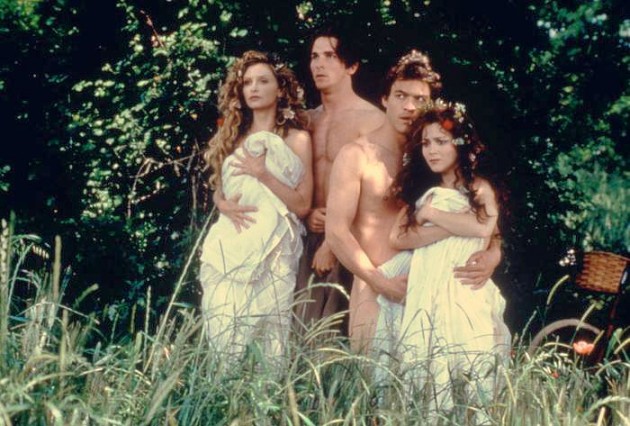
Hermia & Helena
Perhaps the most remarkable thing about Lav Diaz’s four-hour The Woman Who Left is simply that it didn’t try my patience, even though there are long stretches when not a whole lot is happening in the story. The film is about a former teacher (Charo Santos-Concio) who gets out of prison after serving thirty years for a murder she didn’t commit and then goes looking for the man who had her framed, though once she finds him—which is about an hour into the movie—the plot effectively comes to a dead halt. The film’s remaining three hours consist largely of extended scenes in which the heroine passes the time with a handful of people on the lowest rungs of Filipino society, including a hunchbacked hawker (Nonie Buencamino) and an epileptic transexual (John Lloyd Cruz) the teacher nurses back to health after she’s raped. All of these characters have a great deal of complexity (they’re also quite funny), and Diaz’s contemplative style—long shots, long takes, stationary camera—gives us time to reconsider our initial impressions of them. This is the first of Diaz’s movies I’ve seen but it’s already apparent to me that he’s one of the giants of contemporary cinema.
Equally contemplative but, at 72 minutes, much much shorter, Gaston Solnicki’s Kékszakállú consists of a series of brief, associatively linked vignettes filmed with a stationary camera, the majority centring on young women and girls. (The movie takes its title from Béla Bartók’s only opera, Bluebeard’s Castle [1918], portions of which we hear periodically on the soundtrack.) Although there are a number of recurring characters, this is less a narrative film than a sort of city symphony in which the sequencing of the various episodes is guided less by causality or temporal succession than an abstract sense of harmony and order. Moving from a Uruguayan resort town in the summer to Buenos Aires in the winter and back again, the movie gives the spectator a comprehensive survey of what it’s like to be middle-class teenager in Argentina today without ever succumbing to either nostalgia or alarmism.
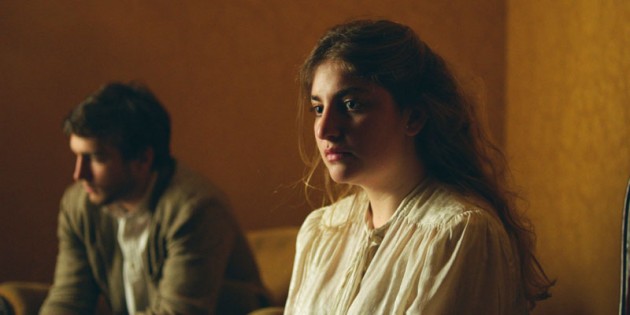
Kékszakállú
Possibly the most bewildering movie I saw at this year’s festival, João Pedro Rodrigues’ The Ornithologist tries to out-Pasolini Pasolini in its allegorical weirdness. The central character is a solitary bird watcher (played at different stages by Paul Hamy and Rodrigues) who nearly drowns when his canoe drifts into some rapids and capsizes. He’s resurrected by a pair of Chinese pilgrims (Chan Suan and Han Wen) who try to convert him to Christianity by tying him to a tree, and after escaping, he wanders through the forests of Portugal where he encounters masked pagans, a buff deaf-mute shepherd named Jesus (Xelo Cagio), and a trio of topless female hunters on horseback. Or perhaps it’s all a hallucination brought on by not taking his meds. I’ll leave it to scholars of Catholicism to explain what all this has to do with St. Anthony of Padua, the patron saint of lost people; speaking purely as a layman, what kept me enraptured throughout were the film’s audacity and the sensuous physicality of its sounds and images in combination with the extremely slow pacing.
Almost equally perplexing but for different reasons, Angela Schanelec’s The Dreamed Path was one of three movies in this year’s Wavelengths section with a bisected or trisected narrative. 3 The story opens in Greece in the late 1980s where an English musician (Thorbjörn Björnsson) is on vacation with his German girlfriend (Miriam Jakob), who wants to be a teacher of Latin and Greek. The second part of the film is set in Berlin in the present and centres on a TV actress (Maren Eggert) who leaves her husband for reasons one feels more than understands. I’ll leave it to scholars of political science to explain what all this has to do with the history of Europe, both ancient and modern; speaking purely as a cinephile, what miffed me about the movie is how closely it approximates the look and sound of late Bresson. (Even the decision to have the teacher always wear the same clothes can be traced back to Pickpocket [1959].) Having only seen the film once, it’s hard for me to say whether Schanelec varies her style parametrically as Bresson did (Bordwell 289-310; Thompson 289-316), but my sense is she merely uses his style as a set of guidelines rather than a means of exploration.
For me, one of the biggest disappointments of this year’s festival was Wang Bing’s Ta’ang, which demonstrates how a commitment to a certain kind of documentary realism can ultimately become self-defeating when taken to extremes. Wang not only eschews voice-over narration and talking head interviews, but refrains from turning his subjects—Ta’ang refugees who’ve fled to western China to escape the fighting in Myanmar—into dramatic characters with individual traits and goals we can empathize with. In other words, rather than shaping his footage into a story, Wang allows the viewer to eavesdrop on a succession of days and nights in the lives of a handful of Ta’ang people as they go about their daily business. The paradoxical result is a movie that’s at once uneventful and difficult to follow as its subjects spend a lot of time talking about people we haven’t met. The irony is that while Wang presumably wants to bring attention to the plight of the Ta’ang people, his strict sense of documentary ethics prevents him from doing the very things that would elicit the interest and sympathy of a wide audience.
Masters
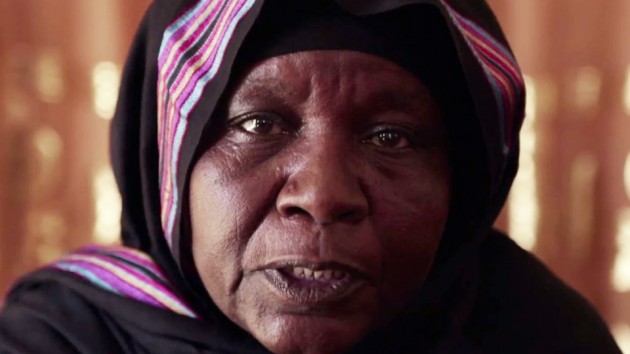
Hissein Habré, une tragédie tschadienne
A Chadian who’s lived in France since 1982, Mahamat-Saleh Haroun makes films, it seems primarily, to explain his homeland to non-Africans. Previously, in Un homme qui crie (2010), he broached Chad’s most recent civil war indirectly through the fictional story of a hotel employee whose means of coping with the country’s political instability was to mentally block it out, but in Hissein Habré, une tragédie tschadienne, he takes a much blunter approach. Habré, who was the country’s president from 1982 to 1990, only appears in the movie twice—once at the beginning, in an archival image from the ’70s, and again at the end, at his trial in Senegal in 2015 where he’s wrapped up like a mummy. The film’s remaining eighty-odd minutes consist largely of interviews with former political prisoners who describe the various ways in which Habré’s regime tortured them and how it’s affected their lives since, either speaking directly to the camera or to an onscreen interviewer. But while it doesn’t take long to establish that Habré is responsible for gross human rights violations, including the deaths of over forty thousand prisoners, Haroun simply doesn’t know when to say when. It’s noble of him to want to give a voice to Habré’s victims but they’re all saying essentially the same thing.
A vastly more interesting nonfiction film about Africa, Ulrich Seidl’s Safari alternates between scenes of rich Europeans hunting exotic animals and interviews with the same people. But while the movie doesn’t take an overt stand on the morality of hunting for sport (there’s no voice-over, nor do we hear Seidl’s questions to his subjects), even the hunters who aren’t obviously racist tend to speak in euphemisms, as if “bagging a piece” wasn’t the same thing as killing an animal, and Seidl’s symmetrical compositions with his subjects surrounded by trophies make the very idea of hunting seem ridiculous. What’s more, Seidl isn’t above a little broad comic relief at the expense of a morbidly obese old man with spindly legs (at one point, he even adds the sound of stomach gurglings to a shot of the man drinking beer in a hiding place), and the movie’s big payoff is a truly disgusting extended sequence in which a group of black men do a very professional job of skinning and cutting up a dead giraffe. (Later on, we see the same men eating chunks of it while staring aggressively into the camera.) Seidl gives the last word to a white character who says nature would be better off if humans didn’t exist, and if nothing else, I’m sure the giraffes would agree with him on that.
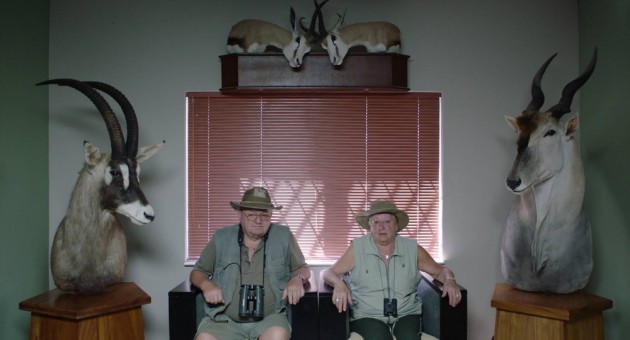
Safari
Hong Sang-soo’s Yourself and Yours is like a mystery story in reverse, beginning with certainty and then getting increasingly murky as the film calls into question some of our most basic assumptions about the characters. In the opening sequence, Youngsoo (Kim Joo-hyuk) hears a rumour that his girlfriend, Minjung (Lee Yoo-young), has been going to bars with other men behind his back, but the validity of this rumour is called into question in the next scene when an older man (Kwon Hae-hyo), who also knows Minjung, meets a woman claiming to be her twin sister. But if Minjung has a twin, why does she never mention this to Youngsoo? Later, when the woman we thought was the twin claims not to recognize the older man, we can’t be sure if this is actually Minjung or if her twin is just pretending not to know him because she’s on a date with another man. Or perhaps she’s a triplet, since she doesn’t recognize Youngsoo either. The ambiguities are mind-boggling, but the scenes setting up our initial hypotheses often sag because the characters themselves are so much less interesting than the questions the movie raises about their identities.
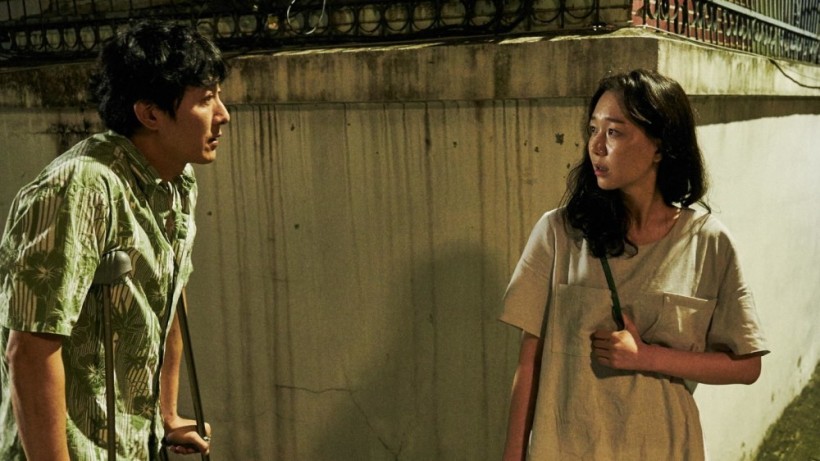
Yourself and Yours
Contemporary World Cinema
The closest thing I saw to a genuine crowd-pleaser at this year’s festival, Kleber Mendonça Filho’s Aquarius pits a 60ish breast cancer survivor (Sonia Braga), who’s so vivacious she seems to have stepped out of an ad for adult diapers, against a smug developer (Humberto Carrão) who wants to tear down her building and resorts to psychological warfare when she refuses to budge. I know, this description sounds dreadful, but Filho is such a gifted storyteller that the film held my attention throughout its 145 minutes. To give a small example without spoiling too much, the second and longest of the movie’s three chapters is titled “O Amor de Clara,” so when we see the heroine sitting in a car with a man in his 20s, we infer she has a boy toy. Then, as he starts to talk about a girl he met online, we have to revise our hypotheses: She’s in love with him but he doesn’t return her feelings, or perhaps they have an open relationship. Only when he calls her “aunt” is the mystery finally resolved. However, as in his previous film, Neighboring Sounds (2012), Filho doesn’t answer all the questions he raises. Several times in the movie, the camera highlights a cabinet which belonged to Clara’s aunt (Thaia Perez), but nobody ever opens it or even mentions it, suggesting there’s a pattern to these shots that viewers have to tease out on their own.
Set in contemporary Niger, Rahmatou Keïta’s The Wedding Ring tells the story of a young woman, Tiyaa (Magaajya Silberfeld), who’s recently returned from studying in France where she lost her virginity to another African student. Wallowing in her memories of the past, Tiyaa is resolutely passive throughout the film so that the episodic plot seems to move around her rather than really involving her. Yet despite this, the story is often difficult to follow so that one only understands towards the end of the movie why Tiyaa’s friend takes her to see a traditional fortune teller in the opening sequence. What’s more, some of the characterizations are extremely broad (a westernized hoochie who tries to wear high heels in the desert serves as a foil for Tiyaa), and when representing Tiyaa’s life in Paris, the film falls back on the most obvious clichés: We see her holding hands with her beau in front of Notre Dame and dining in fancy restaurants while familiar music by J.S. Bach plays on the soundtrack. Nor is there much evidence elsewhere in the movie that Keïta has any real talent for composing sounds and images. That the film is as watchable as it is is due largely to the exoticism of the culture it portrays and Silberfeld’s charismatic screen presence.
Special Presentations
Not having seen Antonio Campos’ previous film, Simon Killer (2012), I can’t say whether Christine, his first movie written by some one else, represents a sudden lurch into the mainstream or if it’s part of a more gradual process. Inspired by the true story of a Florida TV news reporter, Christine Chubbuck (Rebecca Hall), who fatally shot herself on air in 1974, the film differs from Campos’ Afterschool (2008) not only in having more closeups and faster editing but in centring on an active protagonist who has both a work-related goal (to get promoted to a station in Baltimore) and a personal one (to mate and produce offspring). Given the movie’s subject matter, comparisons with Network (Sidney Lumet, 1976) seem inevitable, but the script’s overdetermination of Christine’s suicide blunts any sense it was her crass editor (Tracy Letts) who drove her to it by demanding “juicier” stories. (As well as failing to achieve any of her goals, Christine also suffers from clinical depression.) Imagine a darkly lit Anne Hathaway rom-com where the heroine gets ovarian cancer and kills herself and you’ll have a surprisingly accurate picture of this film.
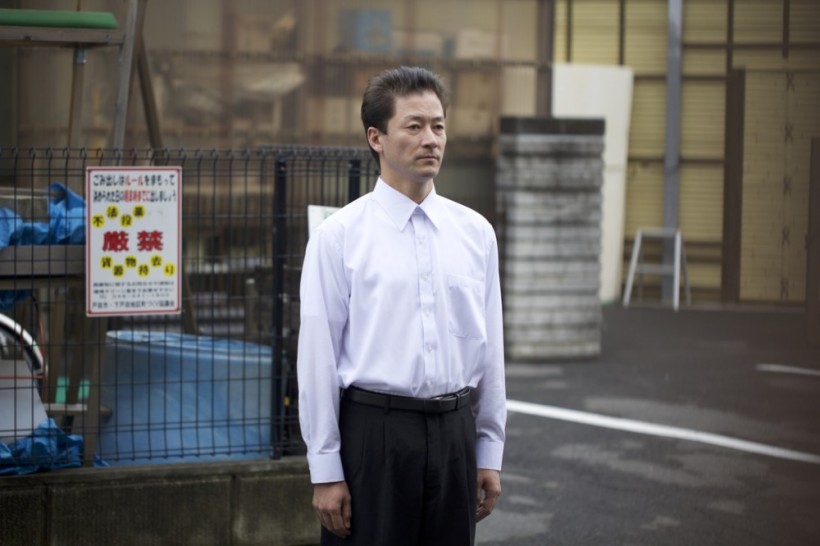
Harmonium
I was planning to see Kelly Reichardt’s new movie, Certain Women, on the last night of the festival, but at the last minute I decided to take a chance on Fukada Koji’s Harmonium (a film I knew nothing about) as I wouldn’t have to wait in line for a ticket, which is how I wound up watching the most powerful movie I saw at TIFF this year. The story is about a metal worker, Toshio (Furutachi Kanji), who hires an old friend, Yasaka (Asano Tadanobu), to help him in his workshop without telling his wife, Akie (Tsutsui Mariko), that Yasaka’s just been released from prison, and part of what makes this film so fascinating is the way it gradually doles out information about the characters. (Yasaka has a mesmerizing monologue explaining to Akie why he went to prison that raises as many questions as it answers.) Almost equally important, however, are the unobtrusive direction—the camera is almost always stationary and there’s little non-diegetic music—and the understated performances. This is a movie where a character raising their voice has the force of an explosion. Somebody should force Xavier Dolan to watch it at gunpoint.
Bibliography
Bordwell, David. Narration in the Fiction Film. Madison: University of Wisconsin Press, 1985. Print.
Thompson, Kristin. Breaking the Glass Armor: Neoformalist Film Analysis. Princeton: Princeton University Press, 1988. Print.
Notes
- The others were public screenings of Aquarius and Christine at the Isabel Bader Theatre and the Scotiabank Theatre on Richmond St. West, respectively. ↩
- Not having seen any of Piñeiro’s previous movies, I have to take his word for it. ↩
- The others were Anocha Suwichakornpong’s By the Time it Gets Dark and Eduardo Williams’ The Human Surge, both of which bored me. ↩



